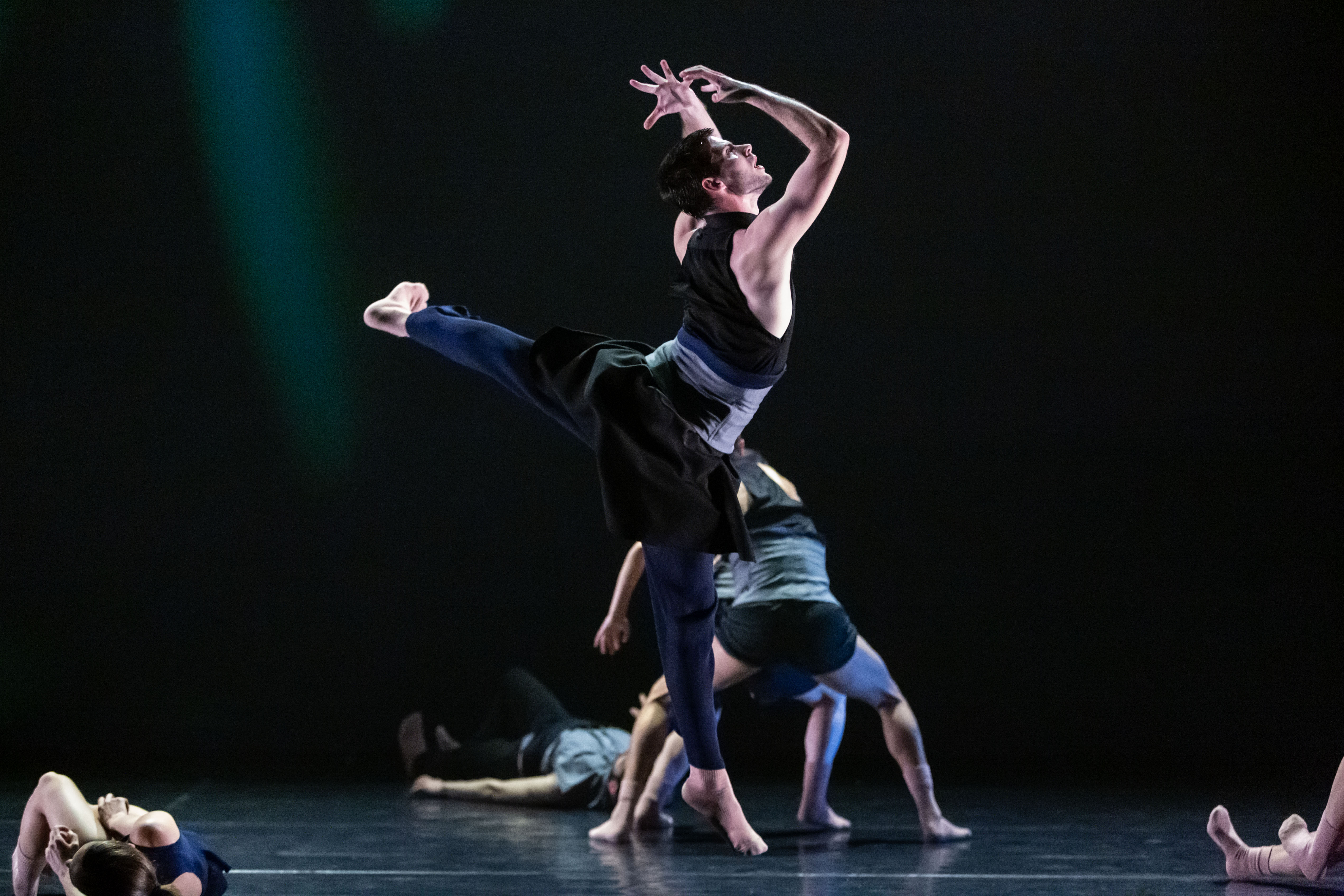Last night in dance: World premiere of Tamir Ginz’s “White Face” by the Kamea Dance Company
The dancers of the company delivered outstanding physical performances in two very different pieces, both dealing with physicality and internal emotional struggles, each driven by different motivations. Truly moving!
Watching the new piece “White Face” reminded me somewhat of Ginz’s previous work “Rage,” which also dealt with the various facets of violence that shake our lives. Tamir Ginz, the artistic director, founder, and choreographer of the company, is an emotional creator who reacts to events happening in society. In this new piece, Ginz confronts violence, hatred, cruelty, humiliation, and the harm that surrounds us as a society, particularly in Israel. People experience “white face” (a term that originates from the way a person’s face turns pale when insulted) on social media and in social interactions as a form of punishment for thinking differently. Ginz presents frustration in the most physical way possible, with dancers fully committing to these feelings.
Gil Nemet, who created the music and video art for “White Face,” produced a unique soundtrack that generates a deeply unsettling atmosphere. In the background, close-ups of faces and body parts are projected onto a giant screen, blending with the dramatic and powerful bodywork of the dancers. Amalia Yakir’s costume designs cannot go unnoticed—both men and women wear corsets over their clothes. Are these hinting at a desire for equality or the erasure of individual identity?
“In ‘White Face,’ I was drawn to explore the dynamics between victim and aggressor, where the boundary blurs, leading one person to hurt another, even with just a word. What fascinates me in this piece is expressing how this impacts me deep within the body. I chose to collaborate with video art and original music, both created in partnership with the Be’er Sheva-based artist Gil Nemet, who greatly inspires me,” says Ginz. “Additionally, after the outbreak of war, I thought about what piece would lift the audience’s spirits during our show, and ‘Gnawa’ by Nacho Duato was immediately the ultimate choice for me. Nacho is one of the most prestigious choreographers in the world, and bringing his work to Kamea was an incredibly challenging task from all angles. This piece has been performed by leading dance companies worldwide. I reached out to him and shared the hurdles we face in light of the immense crisis in our country. In a moving gesture of trust and love, Nacho gifted us the piece for Kamea Dance Company and our audience, as a way of expressing solidarity with us.”
Nacho Duato’s “Gnawa” is an homage to the Mediterranean, drawing from the Spanish choreographer’s surroundings in Valencia and the musical rhythms of Spain and North Africa. Duato’s piece is accompanied by Spanish and North African music. Gnawa itself is a spiritual, rhythmic music that blends ritualistic singing with traditional music and dance, typically performed during nights devoted to prayer and healing, especially in Morocco. During the performance, the dancers enter with candle lanterns, forming a sacred boundary that separates the holy from the ordinary.

